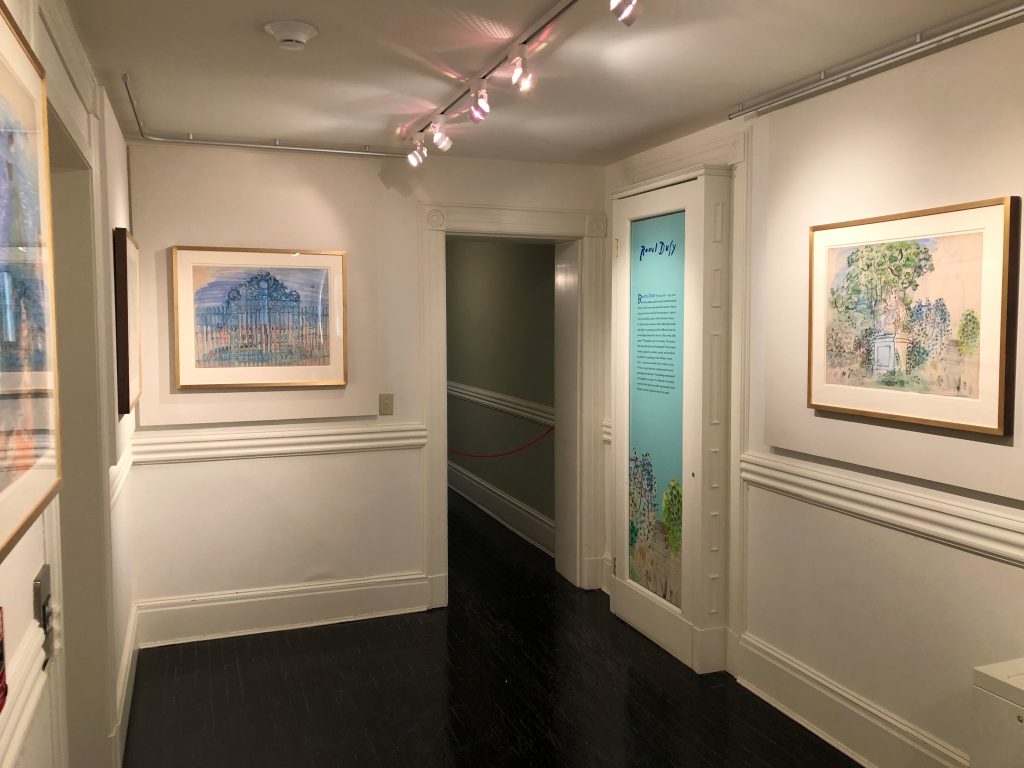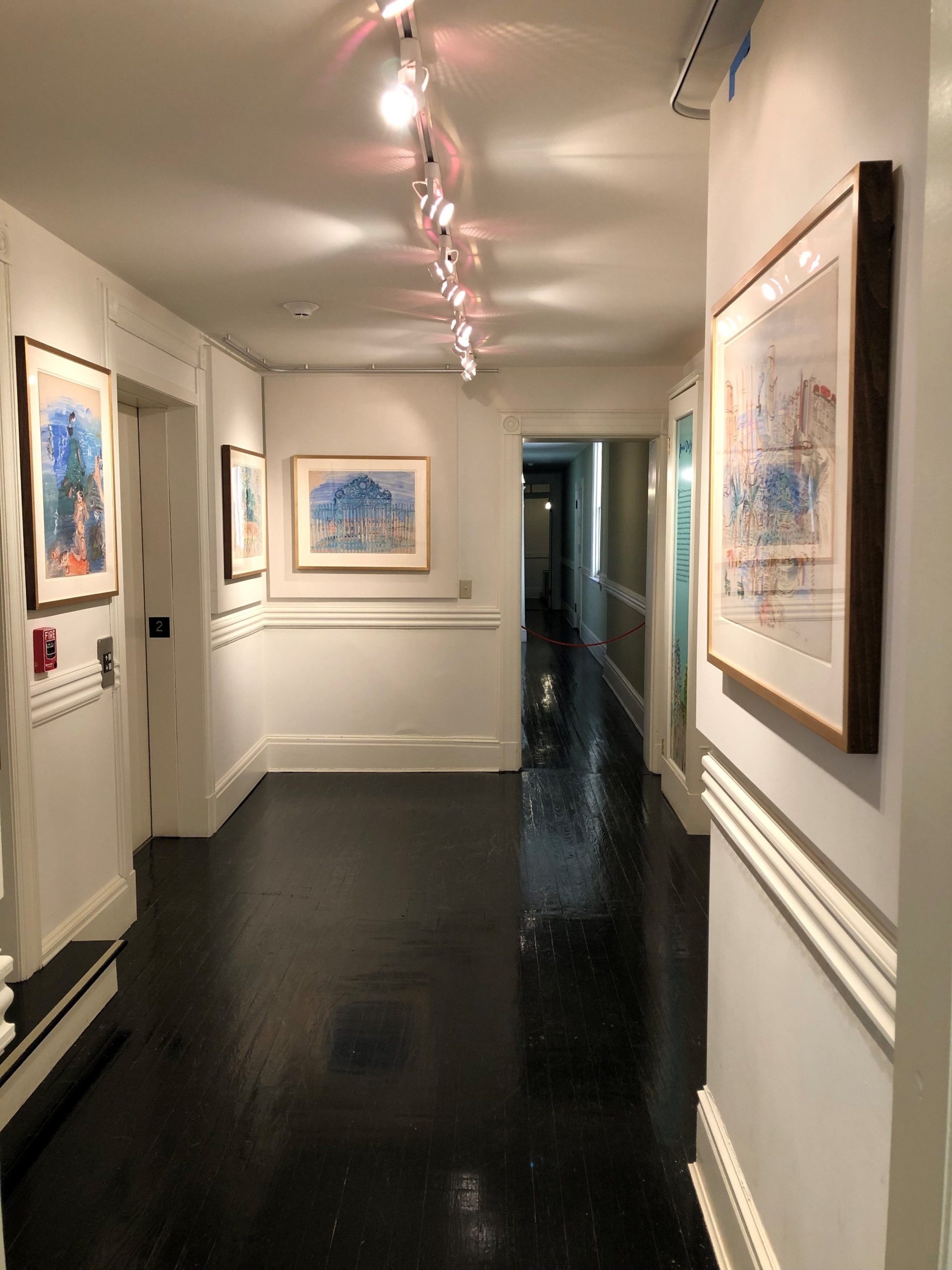In the spring of 2023, Evergreen opened a new Student Engagement Space in what was previously a gallery space on the second floor of the main house. For many years, this gallery featured a handful of works by the French Fauvinist Roaul Dufy (1877-1953). The creation of the Student Engagement Space necessitated a new home for the Dufys, and after several months’ rest, eight Dufys are now installed in a new gallery space on the second floor of the museum’s North Wing.
Dufy created textiles, stage sets, ceramics, murals, and woodcuts in addition to paintings. In 1935, Alice Warder Garrett (1877-1952), the last private resident of Evergreen, first encountered Dufy’s work on a visit to Paris and promptly commissioned several paintings from the artist.
The eight paintings in this new installation are part of a collection of nineteen works by Dufy that were either purchased by Alice Warder Garrett or gifted to her by the artist. While the Garretts were known to scatter their collections throughout Evergreen, gathering the work of one artist in a single space allows visitors to focus more fully on a specific artist and the unique styles and themes that may have attracted the Garretts in the first place.
Dufy’s paintings are characteristic of the Fauvism movement, which focused on vibrant, unnatural colors and bold brushstrokes to capture lively and idyllic scenes. Dufy followed a theory he called couleur-lumiére, which reflected his belief that light in a painting should be different from the natural light produced by the sun. Of his work, Dufy stated: “The painter’s eye is his enemy. The painter who trusts only his eye will be deceived.”
The Dufys will rotate periodically, so come check out the display before it changes once more! Here are a few highlights currently on view:
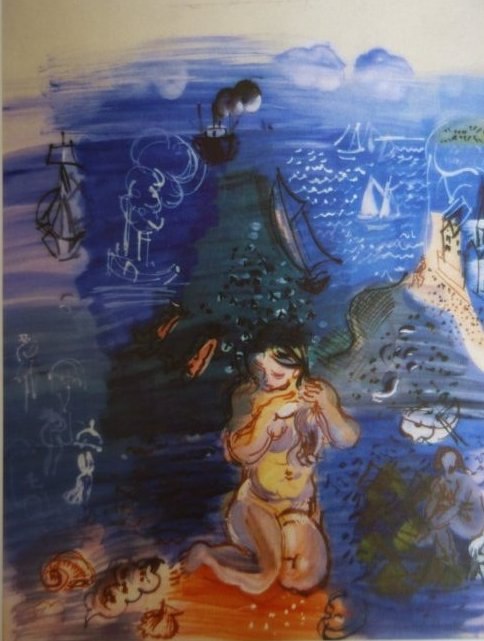
Water nymphs were a favorite subject of Dufy’s. The naiad is specific to Greek mythology and refers to a female spirit that is associated with bodies of fresh water and is both worshiped and feared in folklore. However, water nymphs were prevalent in folklore around the world, including in Celtic mythology, so Dufy’s depiction of a nymph may be a more generalized representation of a folkloric figure than specific to Greek mythology.
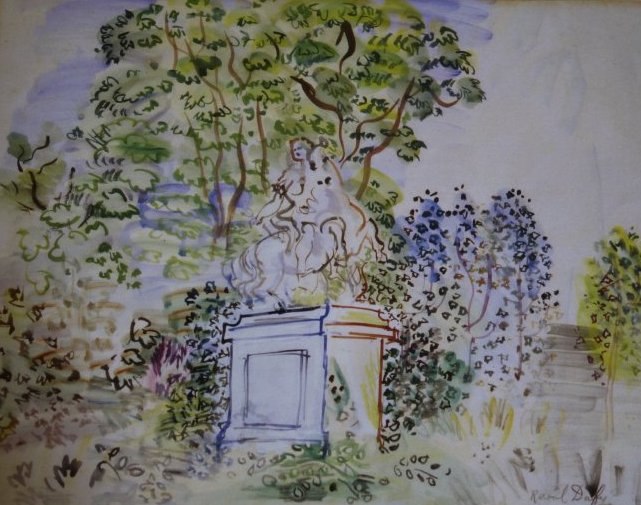
Perhaps Dufy’s enjoyment of depicting horses impacted his decision to paint this statue of King Louis XIV on horseback. Ultimately, however, the painting fits into another one of Dufy’s prominent themes: views of the Versailles gardens, which is where this statue is located. While the statue is a static figure, Dufy has captured the gentle movement of the foliage around the statue, even bleeding some of the greenery into the statue to provide hints of life and movement.
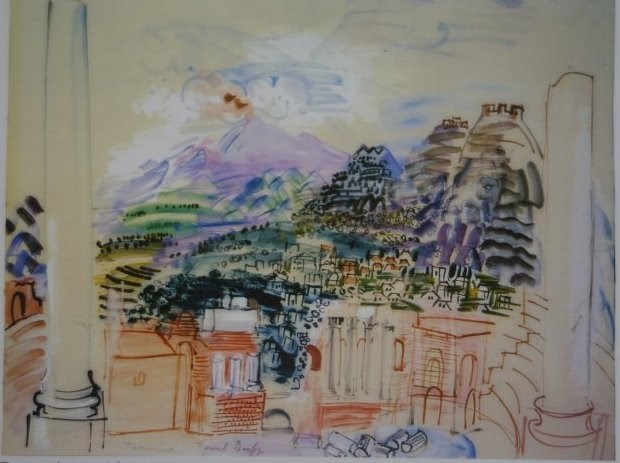
Sicily was another location that inspired Dufy to create several landscape paintings. This view of Taormina, a popular tourist town, is taken from the upper terrace of a Greek theater’s ruins. However, the ruins in the foreground appear small when compared to the vibrant town beyond it with Mt. Etna far in the distance. In this case, Dufy’s use of vibrant and unusual colors captures the feeling of sunlight and propels the viewer’s attention beyond the ruins and into the life of the city.

